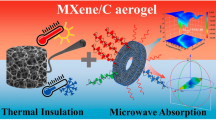Abstract
There is a wide range of application requirements of high-infrared-reflectance materials, like laser, marine, aerospace industry and military. Although metal materials have high reflectivity, oxidation and low melting point limit its applications. Ceramic materials have high melting point and good thermal stability, but their wide band gap always leads to low reflectivity. Thus, we designed a series of high-reflectance ceramics with perovskite structure based on first-principles calculations. The results show that in small doping conditions, the Fermi level appears in the conduction band and the electronic state near Fermi level increased, which contributes greatly to the improvement of reflectivity. The calculation reflectivity of Ba0.5Sr1.5SmTaO6 and Ba1.5Sr0.5SmTaO6 is up to above 99%, which is comparable to metal materials. Through this study, we provide a series of potential materials that can replace metal materials service at higher temperature and atmospheric environment.





Similar content being viewed by others
Data availability
All data included in this paper are available upon request by contact with the contact corresponding author.
References
Taylor JM, Argyropoulos C, Morin SA (2016) Soft surfaces for the reversible control of thin-film microstructure and optical reflectance. Adv Mater 28(13):2595–2600
Miao DG et al (2015) Fabrication of high infrared reflective ceramic films on polyester fabrics by RF magnetron sputtering. Ceram Int 41(1):1595–1601
Wang AQ et al (2015) HfO2/SiO2 multilayer enhanced aluminum alloy-based dual-wavelength high reflective optics. Thin Solid Films 592:232–236
Zhu JP et al (2016) Influence of microstructure on the optical property of plasma-sprayed Al, Cu, and Ag coatings. Mater Des 111:192–197
Wang G, Luo F, Liu C (2006) Reflectance change of 45# steel irradiated by laser in atmosphere. High Power Laser Part Beams 18(2):181–183
Clark SJ et al (2005) First principles methods using CASTEP. Z Kristallogr 220(5–6):567–570
Dudarev SL et al (1998) Electron-energy-loss spectra and the structural stability of nickel oxide: an LSDA + U study. Phys Rev B 57(3):1505–1509
Khadraoui Z et al (2015) Electronic structure and optical properties of TbPO4: experiment and density functional theory calculations. Opt Mater 47:484–489
Wang S et al (2016) Theoretical and experimental studies on the crystal structure, electronic structure and optical properties of SmTaO4. Materials 9(1):55
James J et al (2004) Preparation and properties of Ba2−xSrxSmTaO6 (x = 0–2): a group of new perovskite materials. Mater Chem Phys 83(2–3):328–333
Khadraoui Z et al (2014) Crystal structure, energy band and optical properties of dysprosium monophosphate DyPO4. J Alloys Compd 617:281–286
Wuilloud E et al (1984) Spectroscopic evidence for localized and extended F-symmetry states in CeO2. Phys Rev Lett 53(2):202–205
Funding
This research did not receive any specific grant from funding agencies in the public, commercial, or not-for-profit sectors.
Author information
Authors and Affiliations
Corresponding author
Ethics declarations
Conflict of interest
The authors declare that they have no known competing financial interests or personal relationships that could have appeared to influence the work reported in this paper.
Additional information
Publisher's Note
Springer Nature remains neutral with regard to jurisdictional claims in published maps and institutional affiliations.
Rights and permissions
About this article
Cite this article
Zheng, J., Wang, S., Gao, L. et al. Design of high-reflectance ceramic materials based on the first-principle calculation. J Mater Sci 55, 5481–5487 (2020). https://doi.org/10.1007/s10853-020-04364-5
Received:
Accepted:
Published:
Issue Date:
DOI: https://doi.org/10.1007/s10853-020-04364-5




